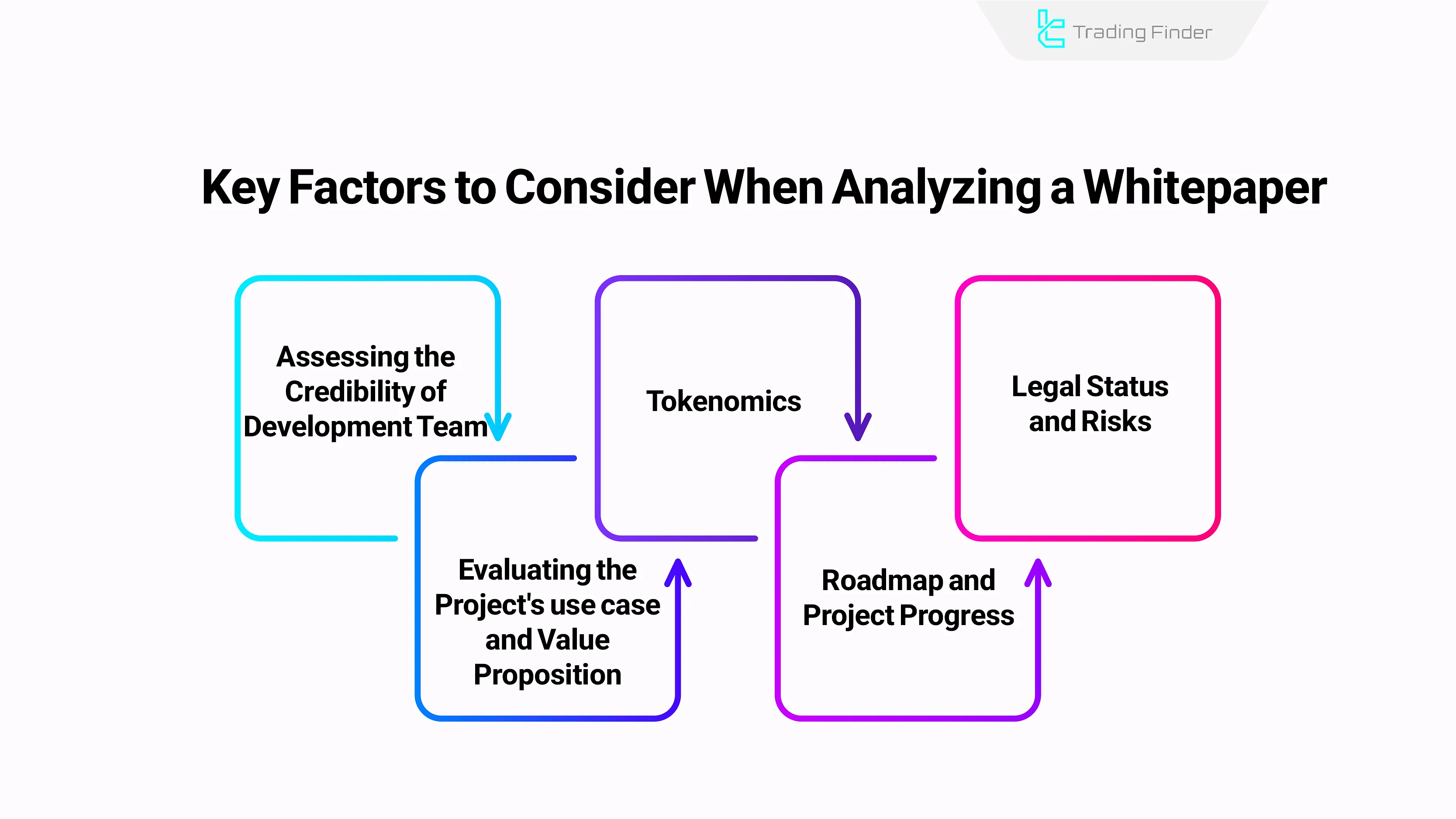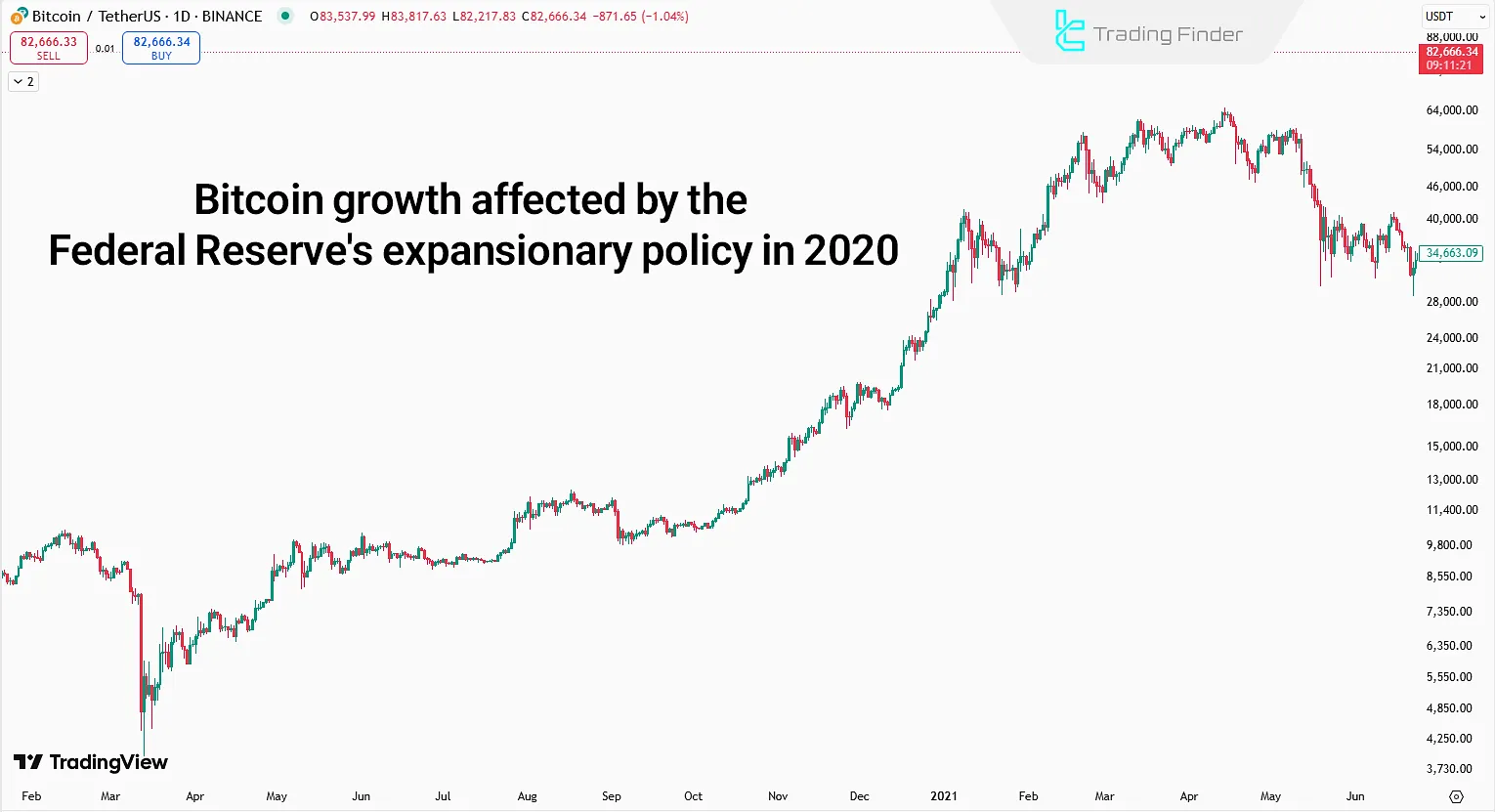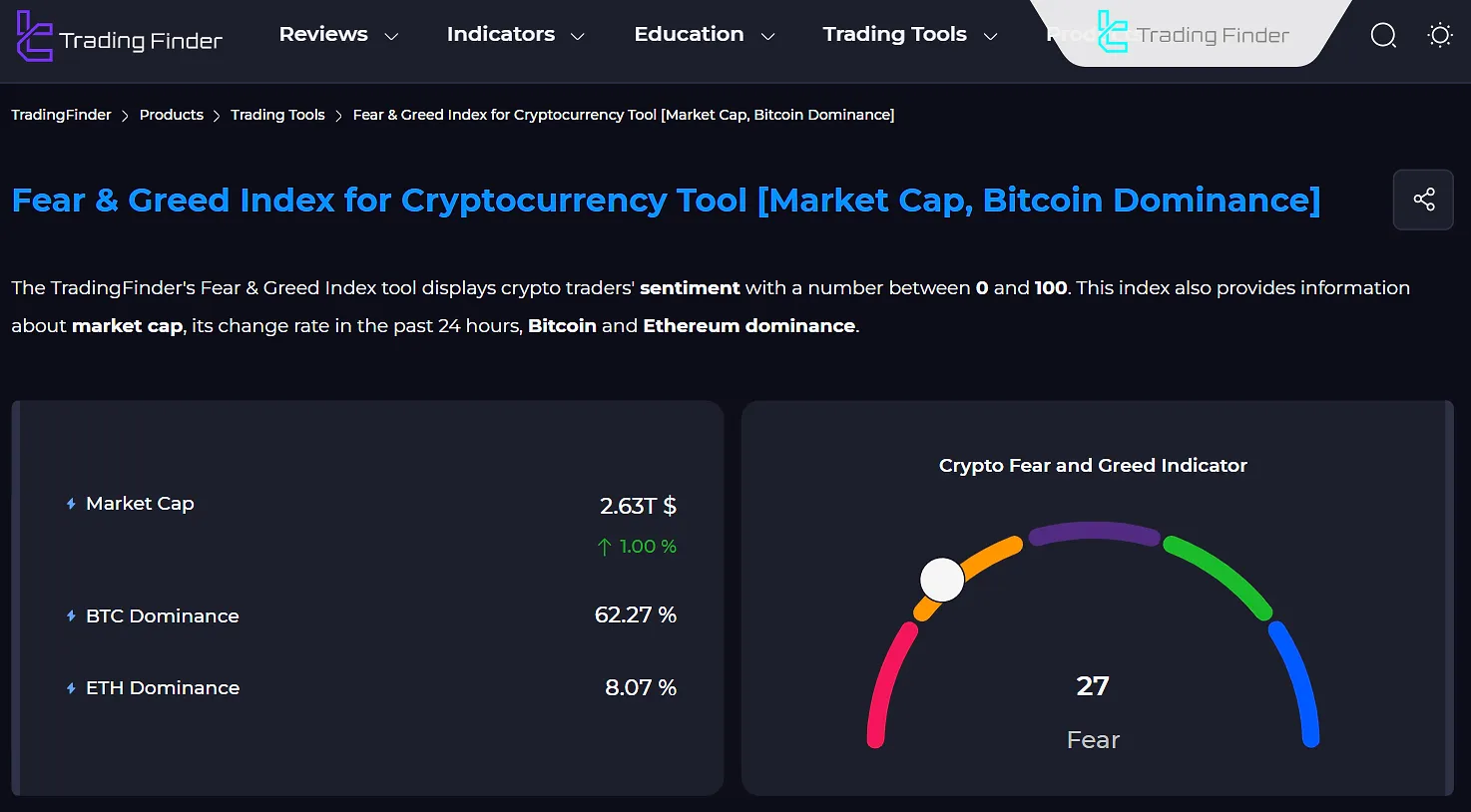In fundamental analysis in cryptocurrency, on-chain metrics (such as on-chain data), market capitalization and token supply, whitepaper and development team, regulatory status, macroeconomic conditions, and general sentiment in financial markets are evaluated.
This type of analysis can be used alongside technical analysis to understand the intrinsic value of cryptocurrencies, forecast long-term trends, and choose the best projects.

Whitepaper and Project Roadmap
A whitepaper is the official and technical document published by a project's development team. It provides comprehensive information about the project's idea, purpose, and roadmap.
Components of a whitepaper include:
- Introduction: Explanation of the problem the project seeks to solve and the needs it addresses, followed by a brief introduction to the project and its approach to solving the issue;
- Technology and Architecture: Technical overview of the project, consensus mechanism (PoS or PoW), and network security model;
- Tokenomics: Maximum token supply, distribution plan and timeline, along with an explanation of the token’s utility within the ecosystem;
- Governance Model: How decisions are made in the network (centralized or decentralized), as well as the development model over time, and the update roadmap;
- Development Team: Introduction of key team members and business partners;
- Roadmap: Timeline of project progress stages, including short-term and long-term goals;
- Regulatory and Legal Status: Legal standing of the project in various countries, as well as adherence to KYC and AML regulations.
How to Analyze a Whitepaper?
Analyzing a whitepaper and understanding the idea, solution, and development team is one of the most essential steps in fundamental analysis in cryptocurrency.

How to review a whitepaper:
- Assessing the credibility of the development team: Examining the background and experience of team members and their success in previous projects
- Utility and value proposition of the project: Evaluating the proposed solution's competitive advantage and feasibility
- Tokenomics: Whether the token supply is limited or unlimited, and the percentage distribution
- Roadmap and project progress: The team's commitment to predefined plans and the roadmap
- Legal status and risk: Assessing the project's regulatory status in different countries
Review of On-Chain Metrics
On-chain refers to the analysis of data recorded on the blockchain. In analyzing on-chain data, investor behavior, market trends, and the network's overall health are evaluated.
Key points in on-chain analysis include:
- Number of active addresses and transaction volume: Number of active wallets over time; growth in active addresses signals project adoption;
- Average transaction value: An increase in average transaction value indicates institutional investors are entering;
- Token velocity: The speed at which a token moves within the network. High velocity indicates growing demand and usage;
- Ratio of short-term and long-term holders: Higher coin retention and more long-term holders indicate a bullish market outlook;
- Exchange reserves: Lower exchange reserves support price; higher reserves indicate selling pressure;
- Hash Rate: The network’s processing power is used to maintain security. An increase indicates better security, while a decline implies network weakness;
- Miner revenue: Income miners earn from transaction fees and block rewards. A drop in miner revenue may lead to selling pressure for the cryptocurrency.
Macroeconomic Conditions and General Sentiment in Fundamental analysis in cryptocurrencies
In addition to reviewing whitepapers, on-chain indicators, and internal market factors, macroeconomic conditions and market sentiment are consistent components of fundamental analysis in cryptocurrency across all financial markets.
The Impact of Monetary Policy on the Cryptocurrency Market
Cryptocurrencies are traded against fiat currencies such as the U.S. dollar. Monetary policies are implemented by central banks to control liquidity, interest rates, and the money supply in the economy.
Therefore, with lower interest rates or expansionary policies, the fiat currency weakens and the crypto market tends to grow.

In 2021, coinciding with the Federal Reserve's interest rate cuts and expansionary policy, the crypto market witnessed a sharp rally.
However, this relationship is not guaranteed, and it’s possible that market reactions to lower rates may already have been priced in ahead of time.
How Do Economic Data Crypto fundamental analysis?
Economic indicators (such as inflation, GDP, unemployment, etc.) have both short-term and long-term effects on the cryptocurrency market.
Theoretically, Bitcoin's price will typically react negatively if a data release supports a stronger dollar (e.g., GDP higher than expectations).
Conversely, in response to data that weakens the dollar (e.g., inflation lower than expected), Bitcoin’s price usually increases.
Geopolitical Risks and Market Sentiment
The cryptocurrency market is a high-risk market that reacts negatively to uncertainty, risk, and a shift toward risk-averse sentiment.
Geopolitical risks, uncertainty in the political and economic outlook, and key data affecting risk sentiment significantly impact the fundamental analysis of cryptocurrency projects.
Fear and Greed Index and Tracking Market Sentiment
The Fear and Greed Index is a tool used to measure the emotions of crypto market participants. Its value ranges from 0 to 100:
- 0 to 24: Extreme Fear – During this phase, the market is experiencing intense fear and is likely near a price bottom;
- 25 to 49: Fear – Although market sentiment is negative, it is not extremely severe;
- 50: Neutral – Indicates balance in market sentiment;
- 51 to 74: Greed – As emotions shift toward greed, the market tends to grow and may exceed its intrinsic value;
- 75 to 100: Extreme Greed – The market is in a state of extreme greed, increasing the likelihood of a price correction.
To monitor cryptocurrency market sentiment, you can use the Fear and Greed Index tool provided by the TradingFinder .

Conclusion
The purpose of crypto fundamental analysis is to discover the intrinsic value of digital assets by reviewing the whitepaper and tracking on-chain indicators such as transaction volume and value, wallet activity, hash rate, and miner revenue.
Moreover, in addition to internal market factors, macroeconomic conditions, unforeseen risks, and the overall sentiment in financial markets also influence the trends in the crypto market.





